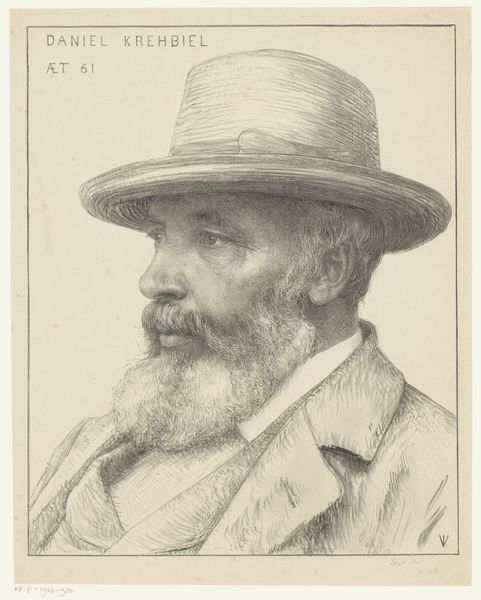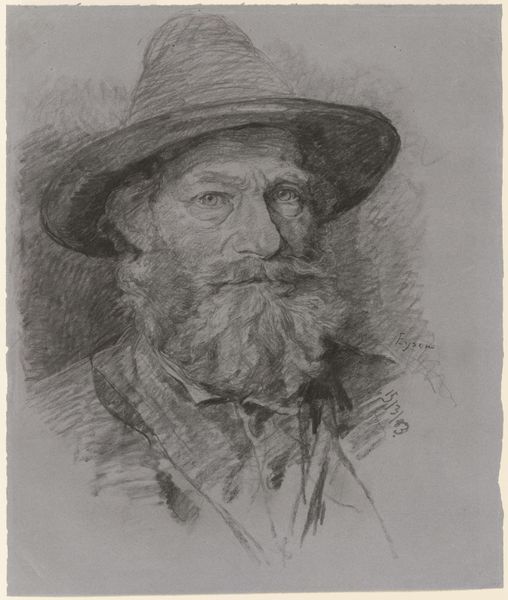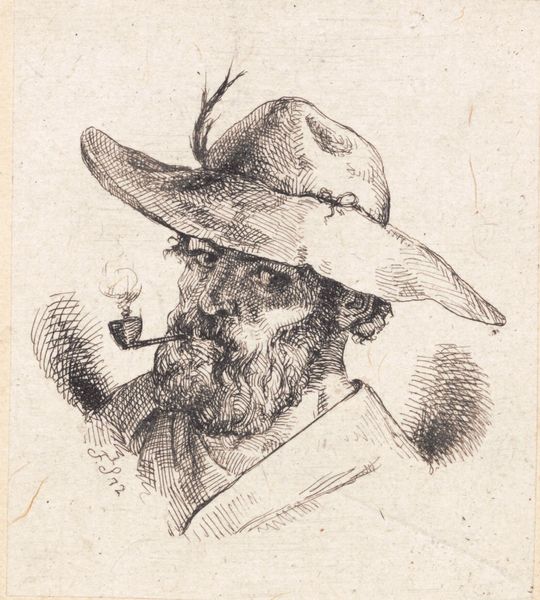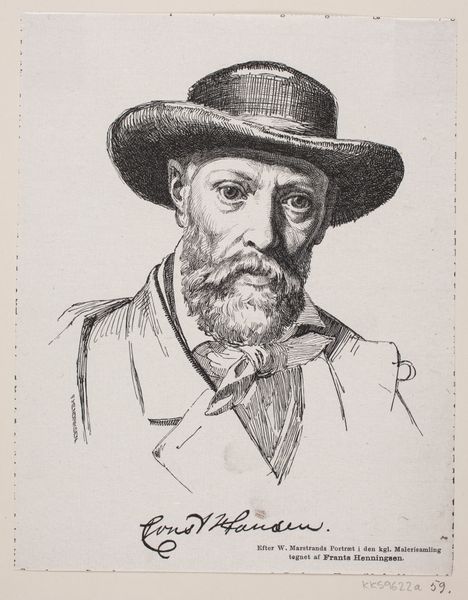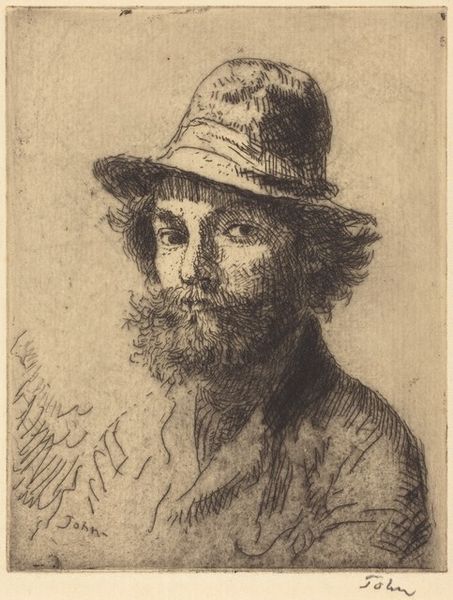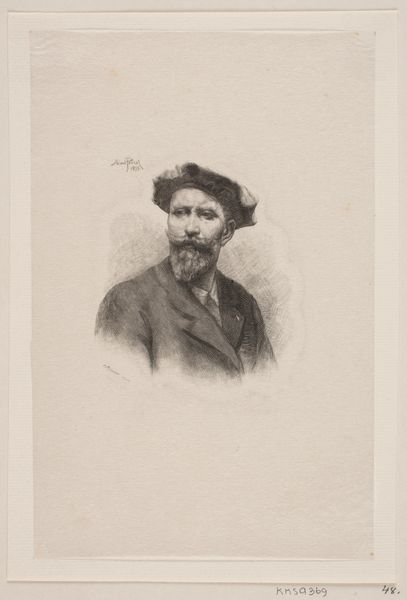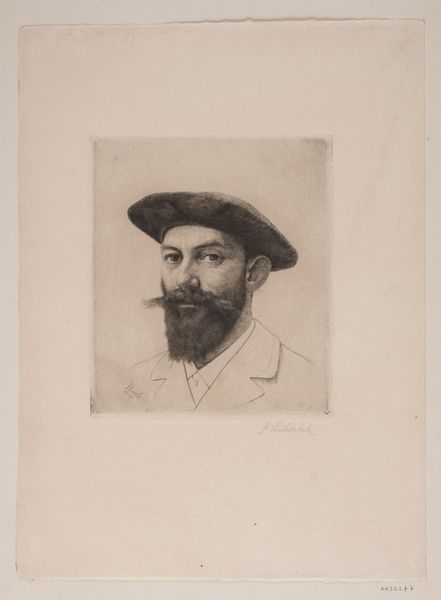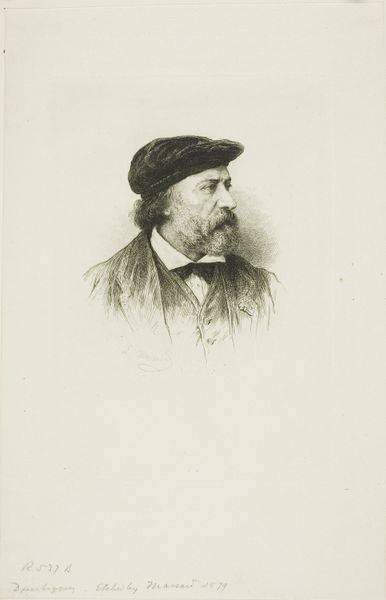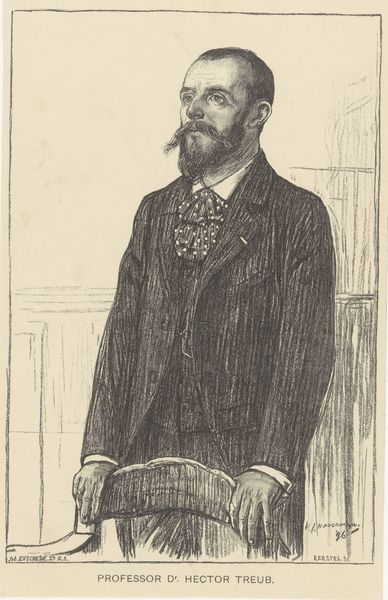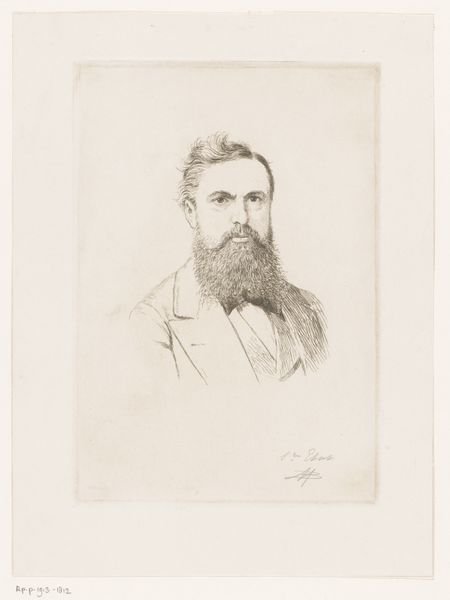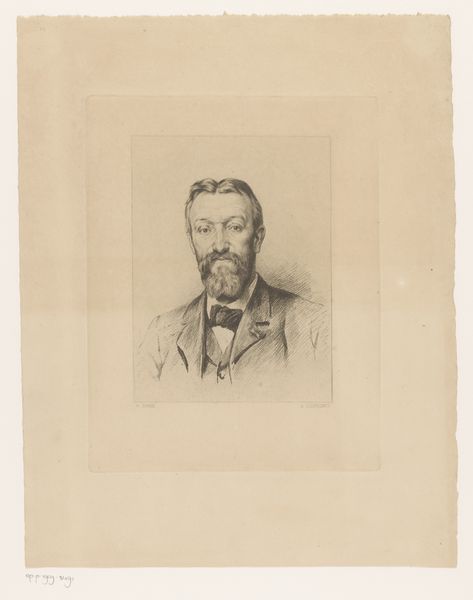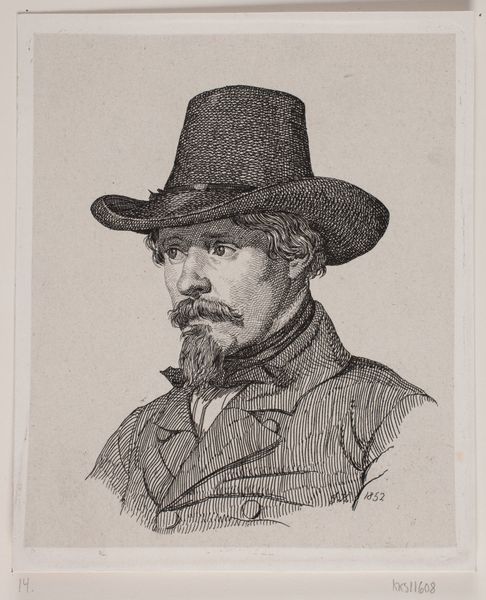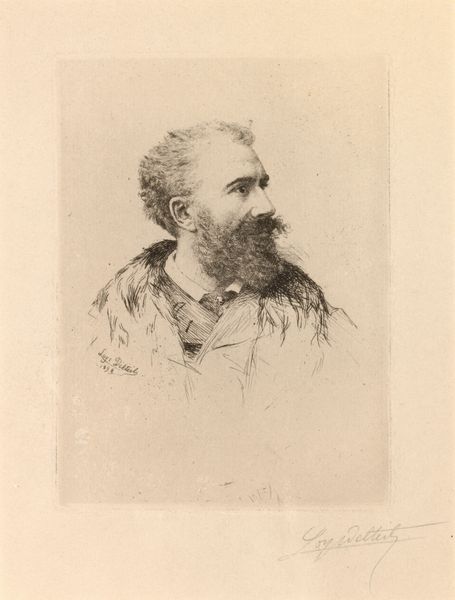
drawing, print, monoprint, graphite
#
portrait
#
pencil drawn
#
drawing
#
self-portrait
# print
#
monoprint
#
pencil drawing
#
graphite
#
portrait drawing
Dimensions: sheet: 30.5 x 21.5 cm (12 x 8 7/16 in.)
Copyright: National Gallery of Art: CC0 1.0
This self-portrait was created by Wilhelm Unger, likely in the mid-19th century. It's an etching, meaning that the image was incised into a metal plate, probably copper, using acid to deepen the lines. Ink was then applied to the plate, and the surface wiped clean, leaving ink only in the etched lines. Finally, the plate was pressed onto paper, transferring the image. The material and process of etching lend themselves to fine detail, as you can see in the intricate lines of Unger’s beard and clothing. But the character of the etched line is different from that of a drawing – more precise and controlled. This would have been a laborious process, requiring skill and patience to execute successfully. In Unger’s time, etching was valued for its ability to reproduce images, playing an important role in the dissemination of knowledge and artistic ideas. Yet, it's also an inherently artistic medium. By understanding the labor and skill involved in its production, we can see how etching blurs the lines between craft and fine art.
Comments
No comments
Be the first to comment and join the conversation on the ultimate creative platform.
